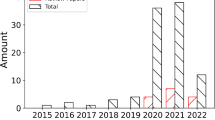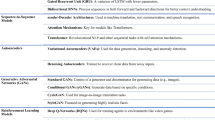Abstract
The study was carried out to investigate the utility of hyperspectral reflectance data for potato late blight disease detection. The hyperspectral data was collected for potato crop at different level of disease infestation using hand-held spectroradiometer over the spectral range of 325–1075 nm. The data was averaged into 10-nm wide wavebands, resulting in 75 narrowbands. The reflectance curve was partitioned into five regions, viz. 400–500 nm, 520–590 nm, 620–680 nm, 770–860 nm and 920–1050 nm. The notable differences in healthy and diseased potato plants were noticed in 770–860 nm and 920–1050 nm range. Vegetation indices, namely NDVI, SR, SAVI and red edge were calculated using reflectance values. The differences between the vegetation indices for plants at different levels of disease infestation were found highly significant. The optimal hyperspectral wavebands to discriminate the healthy plants from disease infested plants were 540, 610, 620, 700, 710, 730, 780 and 1040 nm whereas upto 25% infestation could be discriminated using reflectance at 710, 720 and 750 nm.



Similar content being viewed by others
References
Anonymous. (1947). The measurement of potato blight. Transactions of the British Mycological Society, 31, 140–141.
Arora, R. K., & Paul Khurana, S. M. (2004). Major fungal and bacterial diseases of Potato and their management. In K. G. Mukerji (Ed.), Fruit and vegetable diseases (Vol. I, pp. 189–231). The Netherlands: Kluwer.
Arora, R. K., Ashvir, S., & Panigrahy, S. (2004). Monitoring late blight affected potato crop through remote sensing. Indian Phytopathology, 57, 334.
Birth, G. S., & McVey, G. (1968). Measuring the colour of growing turf with a reflectance spectrophotometer. Agronomy Journal, 60, 640.
Campbell, J. B. (1996). Introduction to remote sensing. London: Taylor and Francis.
Champagne, C. M., Staenz, K., Bannari, A., Mcnairn, H., & Deguise, J. C. (2003). Validation of a hyperspectral curve-fitting model for the estimation of plant water content of agricultural canopies. Remote Sensing of Environment, 87, 148–160.
Cline, B. L. (1970). New eyes for epidemiologists, aerial photography and other remote sensing techniques. American Journal of Epidemiology, 92, 85–89.
Curran, P. J., Dungan, J. L., & Gholz, H. L. (1990). Exploring the relationship between reflectance red edge and chlorophyll content in slash pine. Tree Phyisiology, 7, 33–48.
Elvidge, C. D., & Chen, Z. (1995). Comparison of broadband and narrow-band red and near-infrared vegetation indices. Remote Sensing of Environment, 54, 38–48.
Elvidge, C. D., Chen, Z., & Groeneveld, D. P. (1993). Detection of trace quantities of green vegetation in 1990 AVIRIS data. Remote Sensing of Environment, 44, 271–279.
FieldSpec®Pro (2000). User’s Guide Manual Release Analytical Spectral Devices Inc, Boulder.
Gitelson, A., & Merzlyak, M. N. (1996). Detection of red edge position and chlorophyll content by reflectance measurements near 700 nm. Journal of Plant Physiology, 148, 501–508.
Green, P. E., & Carroll, J. D. (1978). Analyzing multivariate data (p. 519). Illinois: The Dryden Press.
Haboudane, D., Miller, J. R., Trembley, N., Zarco-Tejada, P. J., & Dextraze, L. (2002). Integrated narrowband vegetation indices for prediction of crop chlorophyll content for application to precision agriculture. Remote Sensing of Environment, 81, 416–426.
Hatfield, P. L., & Pinter, P. J., Jr. (1993). Remote sensing for crop protection. Crop Protection, 12, 403–413.
Hay, S. I. (1997). Remote sensing and disease control: past, present and future. Transactions of the Royal Society of Tropical Medicine and Hygiene, 91, 105–106.
Huete, A. R. (1988). A soil adjusted vegetation index. Remote Sensing of Environment, 25, 295–309.
James, W. C. (1973). In L. Chiarappa (Ed.), Crop loss assessment methods. Slough: FAO/CAB.
Knipling, E. B. (1970). Physical and physiological basis for the reflectance of visible and near-infrared radiation from vegetation. Remote Sensing of Environment, 1, 155–159.
Laudien, R., Bareth, G., Doluschitz, R. (2003). Analysis of hyperspectral field data for detection of sugar beet diseases. EFITA 2003 Conference Debrecen, Hungary, pp. 375–381.
Muhammed, H. H. (2005). Hyperspectral crop reflectance data for characterising and estimating fungal disease severity in wheat. Biosystems Engineering, 91, 9–20.
Panigrahy, S., Ray, S. S., Singh, A. (2001). Remote sensing and GIS for potato crop information- case studies in India. South & West Asia Region International Potato Center Newsletter 5, 4
Panigrahy, S., Ray, S. S., Sharma, P. K., Sood, A., and Patel, L. B. (2004). Cropping system analysis of Punjab state using remote sensing and GIS. Scientific Report, RSAM/SAC/CS/SR/04/2003, Space Applications Center, Ahmedabad India.
Penuelas, J., Gamon, J. A., Fredeen, A. L., Merino, J., & Field, C. B. (1994). Reflectance indices associated with physiological changes in nitrogen and water limited sunflower leaves. Remote Sensing of Environment, 48, 135–146.
Pozdnyakova, L., Oudemans, P. V., Hughes, M. G., & Giménez, D. (2002). Estimation of spatial and spectral properties of phytophthora root rot and its effects on cranberry yield. Computers and Electronics in Agriculture, 37, 57–70.
Pu, R., Gong, P., Biging, G. S., & Mirta, R. L. (2003). Extraction of red edge optical pramtyers from Hyperion data for estimation of fores leaf area index. IEEE Transactions on Geoscience and Remote Sensing, 41, 916–921.
Qin, Z., & Zhang, M. (2005). Detection of rice sheath blight for in-season disease management using multispectral remote sensing. International Journal of Applied Earth Observation and Geoinformation, 7, 115–128.
Ray, S. S., Das, G., Singh, J. P., & Panigrahy, S. (2006). Evaluation of hyperspectral indices for LAI estimation and discrimination of potato crop under different irrigation treatments. International Journal of Remote Sensing, 27, 5373–5387.
Rouse, J. W., Haas, R. H., Schell, J. A., Deering, D. W. (1973). Monitoring vegetation system in great plains with ERTS. Proc. 3rd ERTS-1 Symposium, GSFC, NASA, SP-351, pp. 48–62.
Singh, A., Panigrahy, S., & Parihar, J. S. (2002). Assessing in-season trends in potato crop using remote sensing and GIS—a case study for West Bengal. Journal of the Indian Potato Association, 29, 20–25.
SPSS (1999). SPSS for Windows Release 10.0.5 (27 November 1999). SPSS Inc.
Strachan, I. B., Pattey, E., & Boisvert, J. B. (2002). Impact of nitrogen and environmental conditions on corn as detected by hyperspectral reflectance. Remote Sensing of Environment, 80, 213–224.
Zhang, M., Qin, Z., Liu, X., & Ustin, S. L. (2003). Detection of stress in tomatoes induced by late blight disease in California, USA, using hyperspectral remote sensing. International Journal of Applied Earth Observation and Geoinformation, 4, 295–310.
Acknowledgement
Authors are grateful to R. R. Navalgund, Director, SAC, and J. S. Parihar, Deputy Director, EPSA for their keen interest and encouragement. We are also grateful G. S. Kang, former Head, CPRS, S. S. Lal, Head, Crop Production Division, CPRI and J. P. Singh, Principal Scientist, CPRS for their help to carry out the field observation.
Author information
Authors and Affiliations
Corresponding author
About this article
Cite this article
Ray, S.S., Jain, N., Arora, R.K. et al. Utility of Hyperspectral Data for Potato Late Blight Disease Detection. J Indian Soc Remote Sens 39, 161–169 (2011). https://doi.org/10.1007/s12524-011-0094-2
Received:
Accepted:
Published:
Issue Date:
DOI: https://doi.org/10.1007/s12524-011-0094-2




